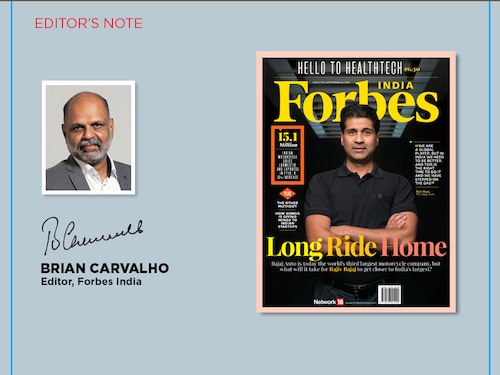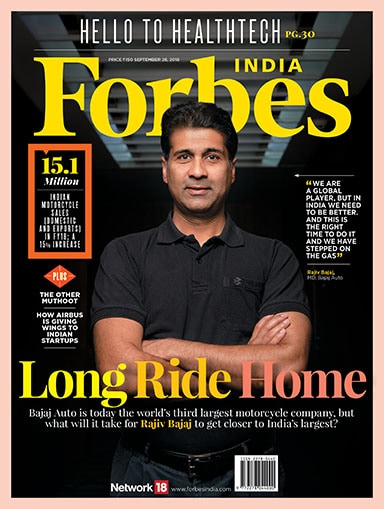The strategy paradox
What will it take for Rajiv Bajaj to make Bajaj Auto India's largest motorcycle maker?


An interview with Rajiv Bajaj invariably turns out to be a masterclass in strategy. The conversation tends to be as much about product as about product differentiation—via innovations and, sometimes, price, too. It’s less about technology, because that is pretty much hygiene in the segments (entry-level and mid-market) that matter most in the product category that the managing director of Bajaj Auto lives and breathes—motorcycles.
What’s also impressive about Bajaj’s strategy is that he’s lived by it for the past 17 years—ever since the Pune-based company made its first, fully-indigenous, successful motorcycle: The power-packed Pulsar. Along with opening up a new market, the Pulsar sent out a message loud and clear: That Bajaj could build powerful and stylish bikes. On its own.The Bajaj Auto strategy can be summed up in two words. Globalisation—not only India as a market, but also the world and specialisation—only motorcycles (along with, in a synergistic niche, an inherited and highly-profitable three-wheeler business, and a four-wheeler derived from it).
Has that strategy worked? The globalisation part, for sure, has, with Bajaj Auto exporting 40 percent of its production to more than 70 countries and emerging as the world’s third largest motorcycle maker.
The narrow focus on motorcycles has worked to the extent that Bajaj Auto wouldn’t have been half the company it is if Rajiv Bajaj and a bunch of enthusiastic engineers hadn’t developed the Pulsar. But here’s the spoiler: Why is Bajaj Auto a distant No 2 in motorcycles at home, the world’s largest market? And how does he narrow the gap with numero uno Hero MotoCorp?
These are the questions Forbes India’s Rajiv Singh set out to answer in this fortnight’s cover story. The short answer: Most Indian consumers look first at—before performance and style—price, quality, fuel efficiency, maintenance costs and resale value before buying a bike. And it’s this market that Hero MotoCorp dominates. To make a dent here, says Singh, Bajaj has triggered two gambits: One, offer the same product (as that of the competitor) for a lower price and, two, offer more products for the same price. For more on those strategies. Don’t miss the interview with Rajiv Bajaj, in which he delves into the triangular strategy of Bajaj Auto, where motorcyles is the main business, supplemented by superbikes, and the third that’s a work in progress—electric vehicles. The interview, in which Bajaj relies often on his marketing gurus Jack Trout and Al Ries for context, is a must-read for every marketer. And perhaps for every reader, too. Particularly when it is peppered with advice like: “I always tell my people, whenever they are in trouble, the starting point should be to narrow one’s focus. Do less. Doing more never works.”
Our other big package of the fortnight is on health technologies, and how they are helping take health care to underserved and unserved areas. Kathakali Chanda’s brilliant research and analysis into how 3D printing is preparing doctors for complicated cases, and Ruchika Shah’s deep dive into healthtech startups that are using artificial intelligence and machine learning to make health delivery more accessible and affordable are just two compelling features in this package.
Best,
Brian Carvalho
Editor, Forbes India
Email:Brian.Carvalho@nw18.com
Twitter id:@Brianc_Ed
First Published: Sep 14, 2018, 17:38
Subscribe Now